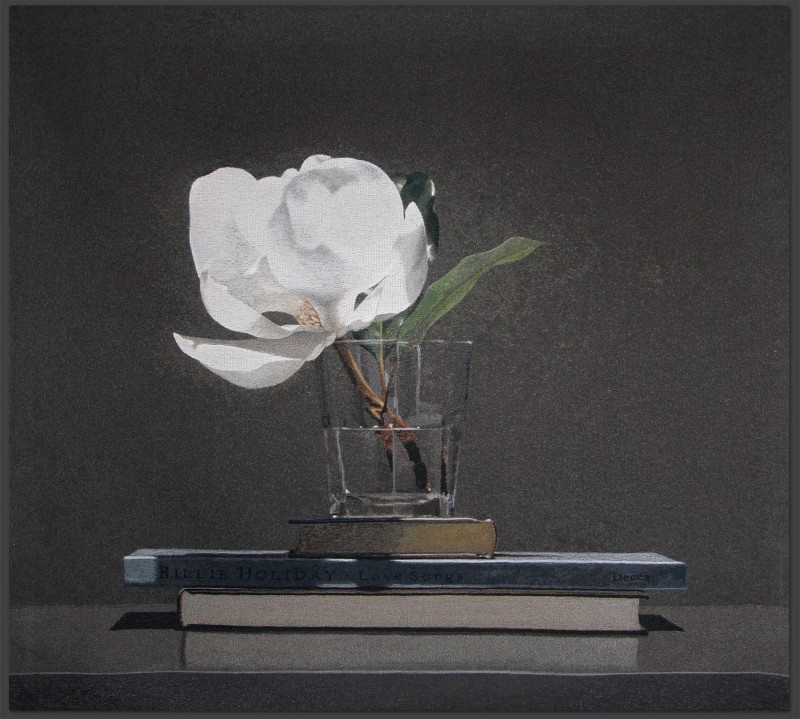
Jacquard tapestry w/touchup fabric paint (by artist)
72 x 78 in.
edition of 8
Guy Diehl’s 2007 tapestry Still Life with Billie Holiday is an understated work: it does not wear its heart on its sleeve. One might easily appreciate the unpretentious, cloudlike beauty of its single magnolia bud or the technical accomplishment of the whole and leave it at that. This tapestry is a departure from Diehl’s typically intense, raking light; in its absence we find an emphasis on questions of texture and surface. There is a singular delicacy—a “grain,” as in a photograph or a voice, that is uniquely his—to the way multiple lithographic color impressions in Diehl’s prints merge to form one image. It is evidenced in the woven medium as well, in the sheer variety of extremely subtle tones he is able to conjure from an almost entirely grisaille palette: the artist’s hand reveals itself in the minute difference between the lowest book and its reflection on the table, or the spare, gentle highlights by which the glass just barely announces itself.
The work can also be read as an elegaic reflection on the fleeting nature of beauty, via the avatar of Holiday herself. The associations which a book of Holiday’s love songs stir in our memories—her sultry dark eyes, that heartbreaking delivery, the tempestuous arc of her life—provide a context within which to read Diehl’s tableau. In view of Holiday’s impermanence and the beacon of her music, the magnolia’s simple, quiet vivacity and the shadowy grays of its surroundings suggest a single candle in a dark room, a diamond in the rough. The best love songs—especially when she sings them—give this same impression: that of a brief window through which a ray of hope may shine.
The bittersweet beauty of the work is buoyed by its comforting physicality and scale: after all, textiles are familiar, warm objects which do last. Its permanence and grand size ultimately lend Still Life for Billie Holiday an air of celebration, of panegyric: an elegant, laudatory tribute. Diehl’s work often involves an artistic reckoning with canonical heroes and giants, paying homage to a master by using his or her formal language. Here, Holiday’s lyricism and piercing emotion seem suspended in time, hovering in the air like the final notes of a song. -Nick Stone
show prices
Prices and availability are subject to change without notice.The copyright of all art images belongs to the individual artists and Magnolia Editions, Inc.
©2003-2026 Magnolia Editions, Inc. All rights reserved. contact us
